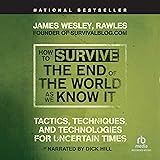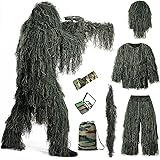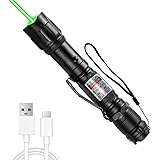Have you ever wondered if the common survival wisdom passed down through generations might actually lead you into danger? While many traditional notions aim to keep you safe in a bind, some so-called “survival tips” could be silently setting you up for failure, or worse, putting your life at significant risk. The video above sheds light on several of these critical missteps, and here, we will delve deeper into why certain widely-accepted practices are considered dangerous survival tips and what safer alternatives should be embraced instead.
Understanding the nuances of wilderness survival and emergency preparedness is paramount. It is often believed that basic knowledge is enough, but in a true survival scenario, misinformation can be as perilous as the elements themselves. This article explores prevalent survival myths that can quickly turn a challenging situation into a dire one, emphasizing the importance of accurate information for safe practices.
Debunking Dangerous Survival Tips: The Peril of Misinformation
When survival is on the line, the difference between life and death can be attributed to the quality of your information. Many popular ideas are founded on half-truths or have been widely exaggerated, becoming dangerous survival myths over time. It is crucial for anyone venturing into the wilderness or preparing for emergencies to critically assess the advice they receive, focusing on proven techniques.
For instance, the idea that all survival situations require immediate, drastic action is often misleading. Patience and careful assessment are key; rushing into a decision can frequently lead to more severe complications. These common mistakes are precisely what can transform a manageable situation into an inescapable one, highlighting the need for sound judgment and proper training.
The Snakebite Scenario: Sucking Out Venom is a Deadly Myth
One of the most enduring and perilous survival myths pertains to snakebites. It is a common misconception that venom can be effectively removed by cutting the wound and sucking out the poison. This dramatic portrayal, often seen in movies, is not only ineffective but incredibly dangerous, representing one of the most critical survival blunders one can make.
When a snakebite occurs, attempting to suck out venom or cut the wound can introduce harmful bacteria, significantly increasing the risk of infection. Furthermore, this action can cause more tissue damage, potentially worsening the injury and accelerating the spread of venom. The mouth contains numerous bacteria that, when introduced into an open wound, are known to cause severe complications, turning a serious situation into a life-threatening one.
Instead, proper wilderness medicine dictates that the affected limb should be immobilized below the heart level. The victim should remain as calm as possible to slow the venom’s spread, and immediate medical attention is sought. A pressure immobilization bandage might be considered for certain types of neurotoxic venoms, but only if one is properly trained to apply it without constricting blood flow.
Water Woes: Drinking Unpurified Water in Desperation
Another frequently cited dangerous survival tip suggests that in extreme thirst, any available water source is better than none. While hydration is absolutely critical, consuming unpurified water, regardless of how clean it appears, is one of the quickest ways to fall victim to waterborne pathogens. This can lead to debilitating illnesses like giardiasis, cholera, or dysentery, which further exacerbate dehydration and severely impair one’s ability to survive.
Imagine a parched traveler in the desert, seeing a puddle. The temptation to drink is immense, but this act is like inviting a new enemy into your already weakened body. These illnesses often result in severe vomiting and diarrhea, which ironically accelerate fluid loss, putting the individual in a far worse state than before. It is a harsh irony that a desperate attempt to quench thirst can lead to more profound dehydration.
Effective water purification is a non-negotiable skill for wilderness safety. Boiling water for a minimum of one minute, using chemical purification tablets, or employing a reliable water filter are the only safe methods. Even seemingly clear streams can harbor microscopic threats, emphasizing that vigilance and preparation are key to avoiding these common mistakes.
Bear Encounters: Knowing When to Fight or Flee
The advice “play dead” when encountering a bear is another of those dangerous survival tips that lacks critical nuance. This generalized counsel is extremely hazardous because the appropriate response depends entirely on the type of bear and the nature of the encounter. Misinterpreting a bear’s behavior can turn a tense moment into a fatal one, making it a pivotal area of critical thinking in survival.
With a defensive grizzly bear or brown bear (especially one with cubs), playing dead by lying on your stomach and protecting your neck can sometimes de-escalate the situation. The bear perceives you as less of a threat, and the attack may stop once it feels the threat has been neutralized. However, with a predatory black bear, playing dead is essentially offering yourself as a meal. In such cases, fighting back aggressively—punching, kicking, using any available weapon—is the recommended course of action.
Understanding the subtle differences in bear behavior and species is vital for emergency preparedness in bear country. Awareness of the local bear population and specific training on bear encounters are far more effective than relying on a single, broad piece of advice.
Navigating by Moss: A Flawed Compass
The belief that moss grows exclusively on the north side of trees, thus serving as a natural compass, is a persistent survival myth. While it sounds poetic, this notion is far from reliable and can lead adventurers significantly astray. Sunlight, humidity, and local environmental conditions are far greater determinants of moss growth than cardinal direction, making it one of the less obvious but still dangerous survival blunders.
Moss growth is influenced by shade and moisture, which can be found on any side of a tree depending on the surrounding terrain, canopy cover, and prevailing winds. Relying on this unreliable indicator for navigation is akin to trying to steer a ship by a drifting cloud. It offers a false sense of security while you are inadvertently veering off course, illustrating the pitfalls of unverified information.
Accurate navigation in the wilderness requires proper tools and skills. A map and compass, a GPS device, or knowledge of celestial navigation (sun, moon, stars) are the proven methods. Practicing these skills regularly ensures that one is not caught in a bind due to relying on anecdotal and ultimately misleading “survival hacks.”
The Peril of Foraging: Don’t Eat What Animals Eat
Many people believe that if an animal can eat a plant, it must be safe for human consumption. This is a profoundly dangerous survival tip. While it might seem logical, the digestive systems and biological tolerances of animals differ vastly from humans. What is harmless or nutritious for a bird or a bear could be poisonous or even lethal to a human, proving to be a critical common mistake in foraging.
Numerous plants are toxic to humans but consumed by various animals without ill effect. For example, some berries that birds safely consume are highly poisonous to humans. Relying on this method is essentially playing a game of biological roulette with potentially fatal consequences. It is a testament to the fact that superficial observations can lead to grave errors in emergency preparedness.
Safe foraging requires extensive knowledge of local flora, often acquired through dedicated study and practice with experts. The universal rule of thumb for wild edibles is: if you are not 100% certain it is safe, do not eat it. Prioritizing known food sources and carrying emergency rations are far safer strategies than guessing based on animal behavior, thus minimizing risk assessment errors.
Conserving Resources vs. Signalling for Help
Another nuanced situation is how and when to signal for help. Some believe that small, carefully managed fires are always best to conserve resources, even when actively seeking rescue. While resource conservation is important, under-signaling during a rescue attempt can be a dangerous survival tip, especially when searchers are actively in the area. The critical balance lies in making your presence known effectively without depleting vital supplies.
During active search and rescue operations, a large, smoky signal fire, strategically placed in an open area, can be far more effective than a small, hidden one. The international distress signal of three signals (three fires, three whistle blasts, three gunshots, three flashes of light) is universally recognized. Delaying a robust signal for too long, or making it too subtle, can result in being overlooked by rescue teams, extending the ordeal unnecessarily.
The wise approach is to prepare for signaling by gathering plenty of fuel beforehand. Once you have reason to believe rescue is imminent or if you’ve been in a survival situation for a critical period, utilizing those resources to create a highly visible and undeniable signal becomes a priority. This proactive approach to emergency preparedness ensures that opportunities for rescue are maximized, shifting from passive hope to active participation in one’s own salvation.











